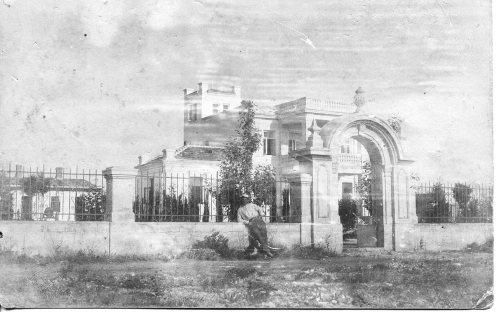I believe that this house near Odessa, Ukraine tells the future of the USA. There are 3 steps to taking over a nation. 1) Disarm the population. 2) Take away private property. 3) Starve those who dissent.

(photo: Ukrainian Archives/Natalia Varakina collection)
As you can imagine, it is impossible to nationalize private property until you’ve disarmed the general population. Once you’ve taken away private property then you can take away the ability to grow and produce food for those you wish to starve. If my friends in Appalachia believe that the war on coal is about clean energy, you are sadly mistaken. The war on coal is not a war on coal, rather those intent on radical change of your way of life understand that those without jobs cannot afford food unless they obey whatever style of government is forced down their throats. It is that simple.
It is also important to understand those at the top of radical change ALWAYS punish their followers first. Why? Because the language used to gain change has different meanings to those at the top than for the rest of us. Innocent sounding terms like “fair share” which come right out of Communist movements in Eastern Europe and Nazi movements in early 1930s Germany, is code for something far different that what the general populace believes. The followers must be eliminated because they are the first to figure out that the “change” was far different that why they were led to believe.
This house is an example: Today it is the museum to the life of Pyotr Petrovich Schmidt. Who was he? Lt. Petrovich Schmidt was the officer in 1905 who led the Russian Navy in a short-lived revolution against the Russian Tsar, personally commanding ships in what became known as the Sevastopol Uprising. The rebel Communists lost that one, but 12 years later they succeeded in overthrowing the Russian government. In 1917 the first shots being fired from the Russian ship “Aurora” anchored in the Saint Petersburg harbor. Those who know anything of Soviet history know that the first to be exiled, jailed, starved or shot were the people who helped the Soviets come to power. The ordinary folk were revolting for a better life but those engineering the revolution were revolting for a different and more drastic form of revolution. Citizens who caught on the scheme were those who aided the revolution and so it was necessary for them to be eliminated first.
And what did all this have to do with private property? That house you see, belonged to the family of Lt. Petrovich. Even though Petrovich Schmidt who Lenin’s shadow government in exile had elevated to the rank of Commander was a hero of the beginnings of the Soviet revolution and who was executed by orders of the Tsar on 19 March 1906, yet his family was one of the first to be thrown out of their home when private property was nationalized by the Communists.
That storyline was carried out systematically by Communists in the first years of the revolution. In the movie Dr Zhivago you’ll recall that Zhivago returned to his family home after serving in the war only to find that his home had been nationalized, parceled into rooms, and someone else was in charge of the home that his family had built and paid for with their own hard work.
I leave you with this reminder. There are 3 steps to taking over a nation. 1) Disarm the population. 2) Take away private property. 3) Starve those who dissent.
Change (revolution) is always bloody. Some revolutions are bloody before, during and after. Some are bloody before and during, like the American revolution against the English. But in every revolution those who dissent must either acquiesce or be eliminated for the change to ultimately succeed.
The choices you make do have consequences. Those consequences are very, very real. As others more wise than myself have said, either we learn from history or we are condemned to repeat it.
